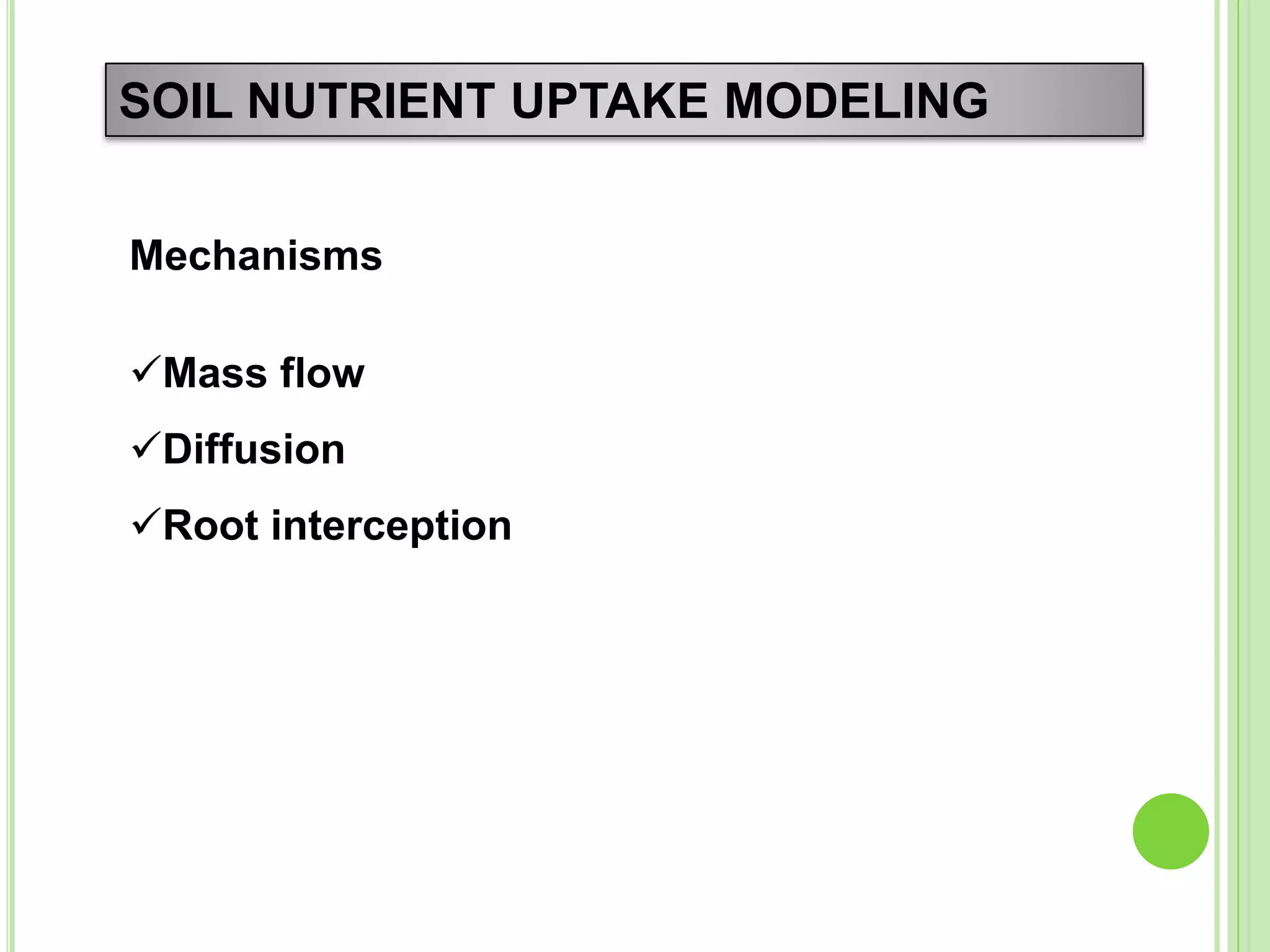1) Nutrient uptake models can be empirical or mechanistic, with mechanistic models being more reliable for extrapolation.
2) Major mechanistic nutrient uptake models are based on the diffusion and mass flow of nutrients from soil to root surfaces.
3) Models have incorporated Michaelis-Menten kinetics to describe crop uptake and considered effects of root properties, soil properties, and competition between roots.
4) Computerized models now simulate nutrient uptake dynamics over time and between competing root systems.

































